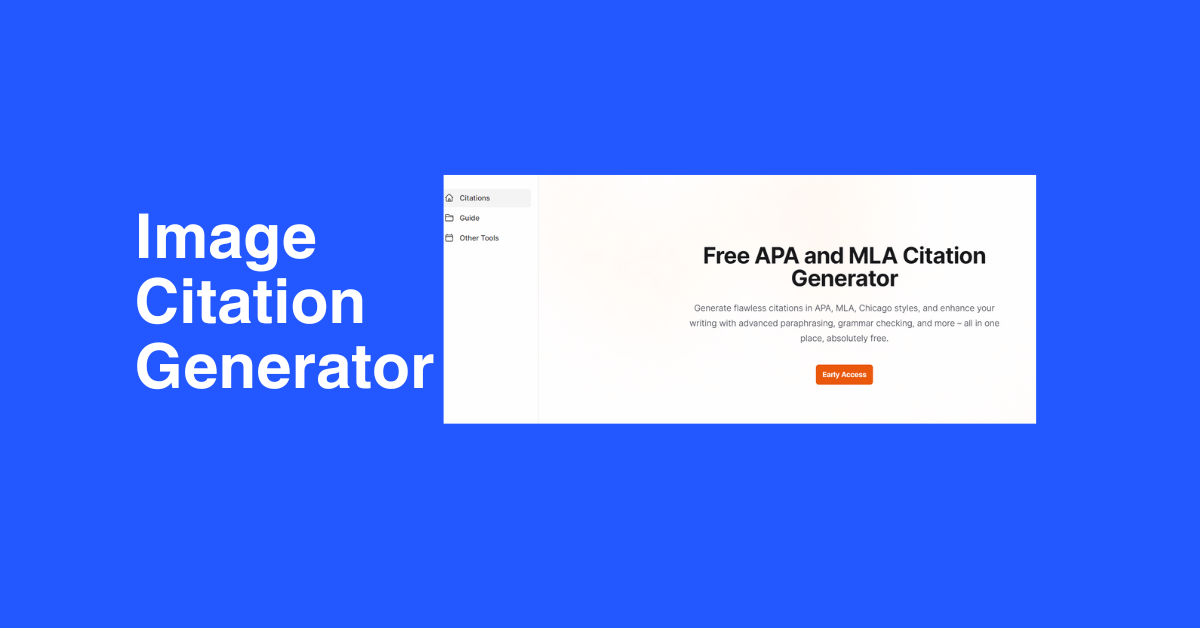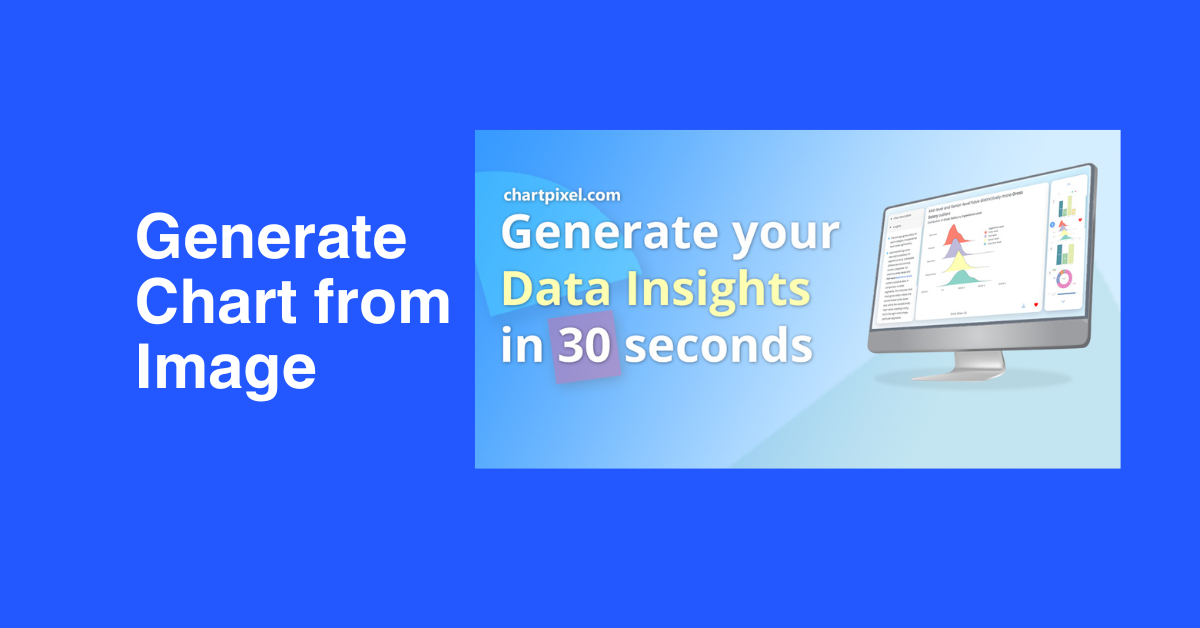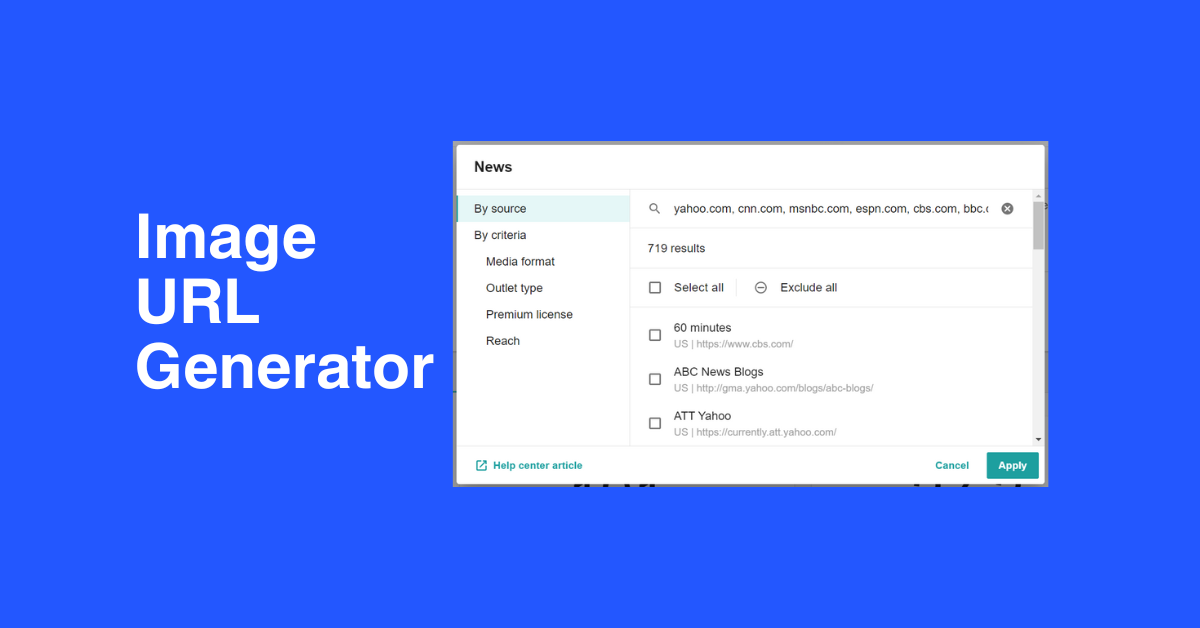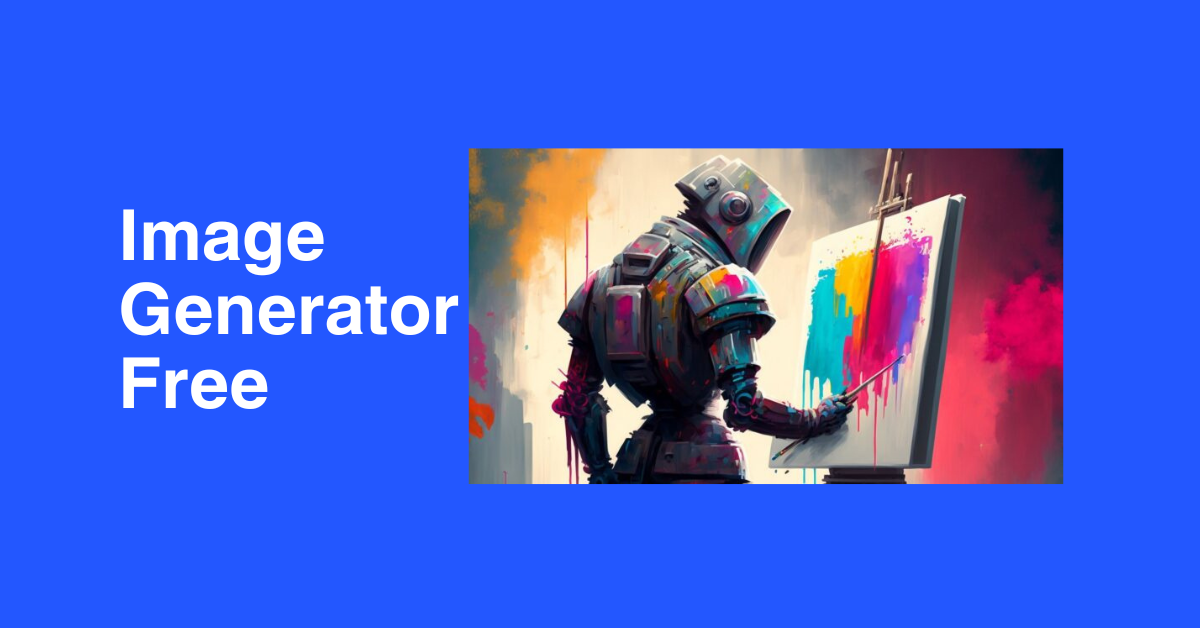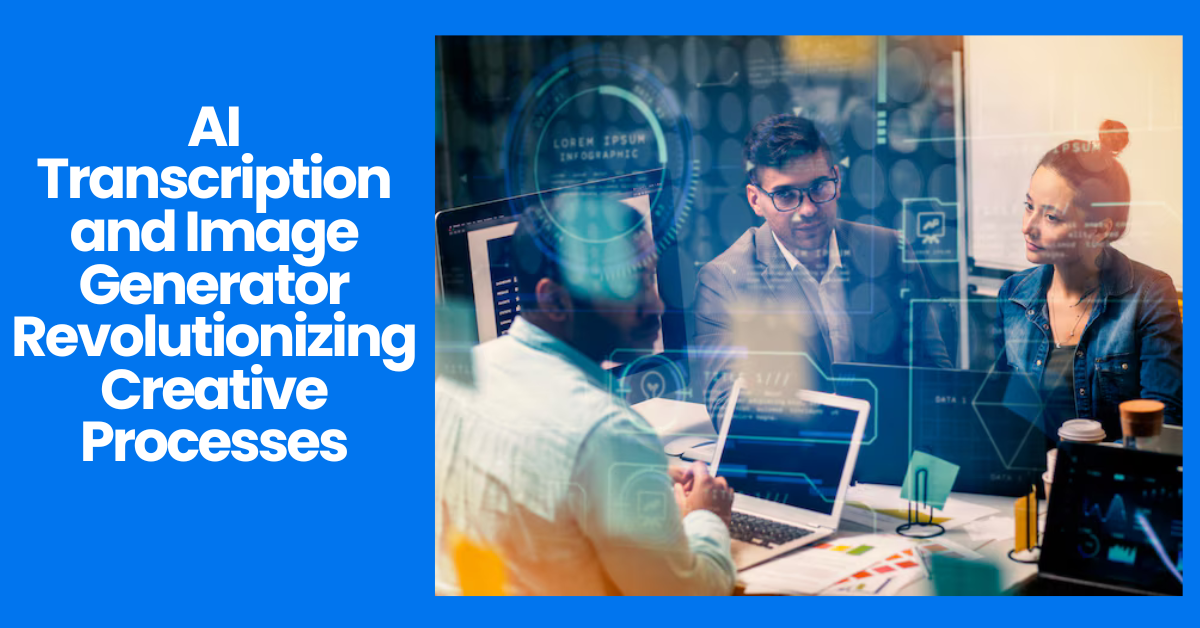
AI Transcription and Image Generator Revolutionizing Creative Processes
- Image Generators
- November 8, 2024
- No Comments
In an age where technology seems to advance at breakneck speeds, the emergence of artificial intelligence, particularly the AI transcription and image generator, has ushered in a new era of creative possibilities. These technologies not only enhance our ability to capture information but also redefine the very way we express ourselves visually. As we delve deeper into how these tools operate, their implications for various industries, and the ethical considerations surrounding them, it becomes clear that understanding these innovations is crucial for anyone aiming to thrive in today’s fast-paced world.
AI Transcription: Revolutionizing the Way We Capture Information

AI transcription is a game-changer in the way we convert spoken language into written text. This technology employs natural language processing (NLP) algorithms to identify words and phrases spoken in audio files or during conversations, significantly streamlining the transcription process. The traditional method of manual transcription is often time-consuming and subject to human error, which is where AI steps in to improve efficiency and accuracy.
The Mechanics of AI Transcription
At its core, AI transcription utilizes sophisticated algorithms to analyze audio data and transform it into text. By employing NLP, machine learning, and deep learning models, these systems learn from vast datasets to understand context, tone, and accents.
When an audio file is uploaded, the AI system processes the sound waves, converting them into text by recognizing phonetic elements. This often involves multiple stages of analysis, including segmentation (breaking down audio into manageable parts), feature extraction (identifying significant cues), and finally, transcription (writing down what was said).
The speed at which AI transcription can operate is remarkable compared to human effort. While a skilled transcriber may take hours to complete a single hour of recording, AI can produce fairly accurate transcripts in minutes. This unprecedented turnaround time is invaluable for industries that rely on quick access to information, such as journalism, legal proceedings, and healthcare.
Applications Across Various Fields
In the legal sector, for example, attorneys utilize AI transcription to document court hearings and depositions efficiently. Accurate records are essential for case building and appeals; thus, facilitating a quicker transcription process can lead to more timely justice.
Healthcare professionals benefit from AI transcription as well. With patient consultations being recorded for later review, doctors can maintain focus during examinations rather than juggling paperwork. Transcripts can be generated almost instantly, allowing for seamless documentation in Electronic Health Records (EHRs).
Beyond specific fields, content creators and educators also leverage AI transcription tools to make their work more streamlined. Whether it be transcribing lectures, interviews, or podcasts, these technologies empower creators to concentrate on their messages while automating the tedious aspects of capturing them.
Improving Accessibility
Another key advantage of AI transcription lies in its potential to promote inclusivity. For individuals with hearing impairments, having easy access to transcribed content significantly enhances their ability to engage with audio materials.
Moreover, providing transcripts alongside audio or video content can enrich the learning experience for all users. In educational settings, students can refer back to transcripts for clarification on complex topics discussed in lectures, ensuring that no one is left behind due to auditory challenges.
Image Generators Powered by AI: A New Era of Visual Creativity

As AI transcription revolutionizes the realm of text, AI-powered image generators are simultaneously redefining visual creativity. These tools utilize generative adversarial networks (GANs), deep learning, and various algorithms to create images based on textual descriptions or existing visuals.
Understanding the Process of Image Generation
AI image generators work through a fascinating interplay between two neural networks: the generator and the discriminator. The generator creates new images based on the input it receives, while the discriminator evaluates these images against real ones to determine authenticity. Over time, both networks evolve through a process known as adversarial training, leading to increasingly realistic images.
For instance, if provided with a prompt like “a serene mountain landscape at sunset,” the generator crafts an image that aligns with that description. Users can fine-tune the output by adjusting parameters or adding constraints, leading to a level of customization that was previously unattainable.
This technology opens up a world of possibilities, allowing artists, designers, and businesses to explore new avenues of creativity without the traditional barriers associated with visual art forms.
Application in the Creative Industries
The creative sectors stand to benefit enormously from AI image generation capabilities. Graphic designers can employ these tools to brainstorm concepts quickly, generating numerous variations before committing to a final design. The iterative process benefits from the speed and flexibility AI provides, enabling designers to experiment without significant time investment.
Similarly, advertising agencies have begun integrating AI-generated images into campaigns. By producing tailored visuals that resonate with specific audiences, brands can enhance their engagement and visibility in an increasingly competitive marketplace.
Furthermore, filmmakers and animators use AI image generation to explore concept art and storyboard ideas. This technology allows visual storytelling to evolve rapidly, expanding the boundaries of creativity and innovation in cinematic production.
Democratizing Art and Design
Notably, AI image generators democratize art creation, making it more accessible to individuals who may lack traditional artistic skills. Aspiring creators can utilize these tools to bring their ideas to life without formal training, fostering an inclusive environment for artistic expression.
While some may argue that this could dilute the essence of art, others believe that it enhances opportunities for collaboration and unique interpretations. Personal insights brought forth by individuals using AI image generators can blend traditional techniques with modern technology, leading to hybridized forms of art that challenge conventional boundaries.
How AI Transcription and Image Generators Are Transforming Industries

The impact of AI transcription and image generation extends beyond individual applications; these technologies are reshaping entire industries. From healthcare and education to marketing and entertainment, the integration of AI tools fosters efficiency, creativity, and collaboration.
Healthcare Innovations
In the healthcare industry, the synergy between AI transcription and image generation creates a holistic approach to patient care. Medical practitioners can record consultations, generate transcripts for medical records, and visualize patient health data through AI-generated charts and infographics.
This combination of technologies enhances communication among team members, improves patient engagement, and supports informed decision-making. Nurses and physicians can quickly reference patient histories through accessible transcripts, while AI-generated visual representations of data facilitate clearer comprehension of complex information.
Education Reimagined
Education is another field undergoing transformation thanks to these innovations. Teachers can utilize AI transcription to create accurate records of lectures, making course materials readily available for students. At the same time, AI image generators can augment teaching materials with custom illustrations, diagrams, and interactive content that cater to diverse learning styles.
Blending these tools results in engaging and effective educational experiences that foster critical thinking and creativity among students. Furthermore, the use of AI in education prepares the next generation for a future where technological literacy is essential.
Marketing Evolution
In marketing, the fusion of AI transcription and image generation leads to innovative campaigns. Brands can analyze consumer feedback through transcribed interviews and surveys, gaining valuable insights to shape their messaging. Simultaneously, they can harness AI-generated visuals to create targeted advertisements that captivate audiences.
The rapid production of marketing content allows companies to pivot swiftly in response to changing trends, creating a nimble, responsive brand identity. By utilizing AI tools, marketers can focus on strategy and creativity rather than being bogged down by administrative tasks.
The Benefits and Challenges of Using AI for Transcription and Image Generation
While the advantages of AI transcription and image generation are evident, there are also challenges that require careful consideration. As organizations adopt these technologies, understanding both sides of the coin is essential for successful implementation.
Benefits of AI Transcription and Image Generation
One of the primary benefits of AI transcription is speed. Automated systems can deliver high-quality transcripts in record time, allowing businesses to act on information promptly.
Additionally, the accuracy of AI transcription continues to improve, reducing the likelihood of errors. This reliability fosters trust in the captured information, especially in sensitive industries like healthcare and law.
AI image generators offer similar advantages in terms of speed and efficiency. They provide creative solutions that can be rapidly customized and adjusted, paving the way for innovative branding and marketing initiatives.
Furthermore, these technologies can reduce costs associated with hiring professional transcribers or artists, thereby making creative processes more economically viable for startups and small businesses.
Challenges in Implementation
Despite the numerous benefits, implementing AI transcription and image generation comes with challenges. One major concern is the potential for misinterpretation by AI algorithms, particularly in nuanced contexts. For instance, sarcasm, humor, or regional dialects may pose difficulties for transcription accuracy.
Another challenge lies in the ethical considerations surrounding creativity. The rise of AI-generated content raises questions about authorship, ownership, and authenticity. Artists and creators may feel threatened by machines that can replicate their work, leading to debates about the value of human artistry versus algorithmic creations.
Finally, organizations must consider data privacy when using AI tools. Ensuring compliance with regulations, such as GDPR, is essential for protecting sensitive information gathered through transcription and image generation processes.
Understanding the Technology Behind AI Transcription and Image Generators
To fully grasp the significance of AI transcription and image generation, it is crucial to understand the underlying technologies that power these innovations. These systems rely on complex algorithms and machine learning techniques to perform tasks traditionally reserved for humans.
Natural Language Processing in AI Transcription
Natural Language Processing (NLP) is a branch of artificial intelligence that focuses on the interaction between computers and human language. It encompasses various tasks, including speech recognition, sentiment analysis, and language generation.
In AI transcription, NLP enables machines to parse spoken language, identify context, and accurately convert audio into written text. The advancements in NLP have greatly enhanced the quality of transcription services, allowing for greater versatility and applicability across different languages and dialects.
Furthermore, continuous research in NLP drives improvements in understanding idiomatic expressions, slang, and technical jargon, allowing AI transcription tools to adapt to specialized industries effectively.
Generative Adversarial Networks for Image Generation
Generative Adversarial Networks (GANs) represent a pivotal breakthrough in image generation. As mentioned earlier, GANs consist of two competing neural networks that work together to create realistic visuals.
The generator’s main goal is to produce authentic-looking images, while the discriminator’s role is to distinguish between real and generated images. This dynamic creates a feedback loop that reinforces the strengths and weaknesses of both networks, driving improvement over time.
The versatility of GANs allows them to generate an endless array of visual styles and formats, making them suitable for various applications ranging from art and design to commercial product visualization.
Ethical Considerations in AI Technologies
Understanding the ethical considerations surrounding AI transcription and image generation is paramount as these technologies continue to evolve. Issues of consent, bias, and accountability arise in discussions about the integration of AI tools into society.
Bias in AI algorithms can perpetuate harmful stereotypes or reinforce societal inequalities if historical data reflects existing disparities. Therefore, developers must strive for fairness and transparency in their training datasets to ensure inclusive outputs.
Moreover, ownership and copyright issues emerge when discussing AI-generated content. Defining authorship becomes complicated when machines play a significant role in the creative process. Striking a balance between technological advancement and ethical responsibility is vital for ensuring the responsible integration of AI into societies.
AI Transcription vs. Human Transcription: A Comparative Analysis
As AI transcription technology continues to advance, many question how it compares to traditional human transcription methods. Both approaches possess unique strengths and weaknesses that should be carefully weighed depending on the context of use.
Speed and Efficiency
One of the most significant advantages of AI transcription is speed. Automated systems can process vast amounts of audio content in a fraction of the time it would take a human transcriber. This efficiency is particularly beneficial in scenarios requiring immediate access to information, such as live events or customer service interactions.
However, while AI transcription may excel in speed, human transcribers bring nuance and contextual understanding to the table. They can discern subtle tonal shifts, emotions, and non-verbal cues that might elude AI algorithms. In situations where accuracy and comprehension are paramount—including legal or medical documentation—human transcribers remain irreplaceable.
Cost Considerations
The cost-effectiveness of AI transcription is undeniably appealing. Organizations can save money by relying on automated tools instead of hiring dedicated transcribers. This financial incentive is particularly advantageous for startups and businesses with limited budgets.
On the flip side, human transcribers may charge higher fees, but their expertise can yield higher-quality results, especially in challenging audio conditions or specialized fields. Companies must weigh the initial costs against long-term benefits when deciding which transcription route to pursue.
Accuracy and Quality
Accuracy is perhaps the most critical factor in transcription. While AI technology has come a long way in delivering reliable results, it is still prone to errors, especially in difficult contexts, such as heavy accents, overlapping dialogue, or background noise.
Human transcribers, experienced in their craft, possess the ability to catch mistakes, clarify unclear segments, and apply their judgment to yield a polished final product. For enterprises that prioritize precision, human transcription remains an indispensable resource.
Ultimately, selecting between AI transcription and human transcription depends on the specific needs of a project. Organizations may find success by adopting a hybrid approach, utilizing AI tools for preliminary drafts while enlisting human expertise for final reviews.
The Ethics of AI Image Generation: Balancing Creativity with Responsibility
With the rise of AI image generators, ethical dilemmas arise that must be thoughtfully considered. As these technologies become more prevalent, addressing the implications of their use is crucial for fostering a responsible creative environment.
Ownership and Copyright Issues
A significant ethical concern revolves around authorship. Who owns the rights to an image generated by an AI? If a creator inputs prompts into an AI generator and produces a piece of artwork, do they hold exclusive rights to that image, or does the technology itself claim ownership?
These questions raise profound implications for artists, designers, and other creatives. Establishing guidelines for copyright in the age of AI-generated content is necessary to prevent misuse and protect the interests of human creators.
Misinformation and Misuse
AI-generated images are increasingly sophisticated, raising concerns about the potential for misinformation. Deepfakes and altered visuals can propagate false narratives and shape public perception in dangerous ways.
As AI tools become more accessible, distinguishing between genuine and manipulated content becomes crucial. Creators and platforms must develop robust verification systems to address this issue and mitigate the risk of harm stemming from misleading imagery.
Fairness and Inclusivity
AI image generators can inadvertently reflect biases present in their training datasets, leading to stereotypical representations or exclusion of certain demographics. Developers must prioritize diversity and representational equity while curating datasets for training AI models.
Fostering inclusivity means actively seeking out diverse perspectives and voices in the creative process, ensuring that AI-generated content reflects a broad range of experiences and backgrounds.
Top AI Transcription and Image Generator Tools: A Comprehensive Guide
With many options available, navigating the landscape of AI transcription and image generator tools can be challenging. Below are some popular and effective platforms worth considering.
Leading AI Transcription Tools
- Otter.ai: A favorite among professionals, Otter.ai offers robust transcription capabilities with real-time collaboration features. Users can easily share and edit transcripts, making it an excellent choice for teams.
- Rev.com: Known for its blend of AI and human transcription, Rev.com provides high-quality transcripts with added accuracy. Users can choose between automated and professional services depending on their needs.
- Trint: Combining transcription with powerful editing tools, Trint allows users to search, highlight, and annotate transcripts seamlessly. Its user-friendly interface makes it ideal for journalists and content creators.
Innovative Image Generator Platforms
- DALL-E: Developed by OpenAI, DALL-E leverages the power of GPT-3 to generate stunning images based on textual prompts. Users can explore creative possibilities and customize outputs effortlessly.
- DeepArt: Harnessing the power of neural networks, DeepArt allows users to transform their photographs into art pieces inspired by famous artists’ styles. This platform merges traditional artistry with modern technology.
- Artbreeder: Focused on collaborative creativity, Artbreeder enables users to combine images and experiment with different styles, resulting in unique visuals created through community-driven input.
Choosing the Right Tool
Selecting the right tool ultimately depends on individual needs and use cases. Businesses should assess factors such as budget, required features, scalability, and desired outcomes before committing to a particular platform.
Each tool presents distinct strengths and user experiences, so exploring demos and trial versions can assist in finding the perfect fit for specific projects.
Future Trends in AI Transcription and Image Generation: What’s Next?
The rapid evolution of AI transcription and image generation hints at a promising future filled with exciting developments. As technology progresses, several trends are likely to shape the landscape of these tools moving forward.
Enhanced Multimodal Capabilities
Future AI systems will likely integrate multimodal capabilities, allowing them to analyze and generate content across various formats seamlessly. For instance, combining text, audio, and visuals in a cohesive manner will enable richer storytelling experiences.
Imagine an AI tool capable of generating a video presentation that incorporates transcriptions of audio interviews along with relevant visuals—all personalized based on user preferences. Such capabilities will revolutionize how we interact with information and content.
Improved Personalization
Personalization is already a growing trend across digital experiences, and AI transcription and image generation will follow suit. Future tools will likely harness user data and preferences to tailor outputs, ensuring relevancy and resonance with individual users.
This shift toward personalization will make AI-generated content even more impactful, enhancing engagement and satisfaction while fostering deeper connections between creators and their audiences.
Ethical Framework Development
As awareness of the ethical implications surrounding AI tools grows, we can anticipate the emergence of comprehensive frameworks guiding responsible usage. Developers, policymakers, and industry leaders will collaborate to establish best practices and standards for the ethical deployment of AI technologies.
Such frameworks will address issues of transparency, accountability, and equity, ensuring that AI serves as a force for good in creative communities rather than a source of division or controversy.
How to Leverage AI Transcription and Image Generators for Business Success
For businesses seeking to capitalize on the advantages of AI transcription and image generation, integrating these tools effectively can lead to significant gains in productivity and creativity. Below are strategies for leveraging these technologies:
Streamlining Workflow Processes
AI transcription can streamline workflow processes by eliminating manual data entry and reducing administrative burdens. Teams can implement transcription tools for meetings, brainstorming sessions, and client consultations, ensuring that valuable insights are captured without distraction.
By freeing up time spent on mundane tasks, employees can devote their energy to strategic decision-making and creative endeavors, thus enhancing overall productivity.
Enhancing Marketing Efforts
Marketers can harness AI-generated images to create eye-catching visuals for campaigns, social media posts, and promotional materials. These tools allow for rapid prototyping and iteration, enabling brands to test multiple designs before launching.
Furthermore, analyzing transcribed feedback from customers can inform marketing strategies, helping businesses better understand audience preferences and tailor messaging accordingly.
Fostering Collaboration and Innovation
Encouraging collaboration among teams can lead to fresh ideas and innovative solutions. Utilizing AI transcription tools to create accessible records of brainstorming sessions fosters inclusivity and encourages participation from all team members.
Additionally, encouraging the use of AI image generators for ideation can spark creativity and open new avenues for exploration. By blending human intuition with machine-generated content, businesses can push the boundaries of what’s possible.
Conclusion
As we navigate the exciting landscape of AI transcription and image generation, it becomes evident that these technologies are transforming the way we capture, interpret, and create information. By harnessing the power of AI, businesses, educators, and artists can unlock new levels of efficiency, creativity, and collaboration.
While challenges surrounding ethics, ownership, and accuracy persist, the integration of AI tools offers unparalleled opportunities for growth. By embracing these innovations, we position ourselves at the forefront of a new era defined by boundless creative potential.
As the landscape continues to evolve, staying informed about emerging trends and leveraging AI responsibly will be key to thriving in an increasingly digitized world. Together, we stand on the brink of a creative revolution, driven by the awe-inspiring capabilities of AI transcription and image generation.
Looking to learn more? Dive into our related article for in-depth insights into the Best Tools For Image Generation. Plus, discover more in our latest blog post on Best Image AI Generator. Keep exploring with us!
Related Tools:
Image Generation Tools
Video Generators
Productivity Tools
Design Generation Tools
Music Generation Tools

